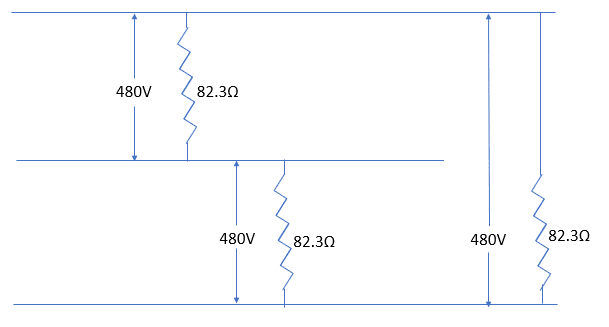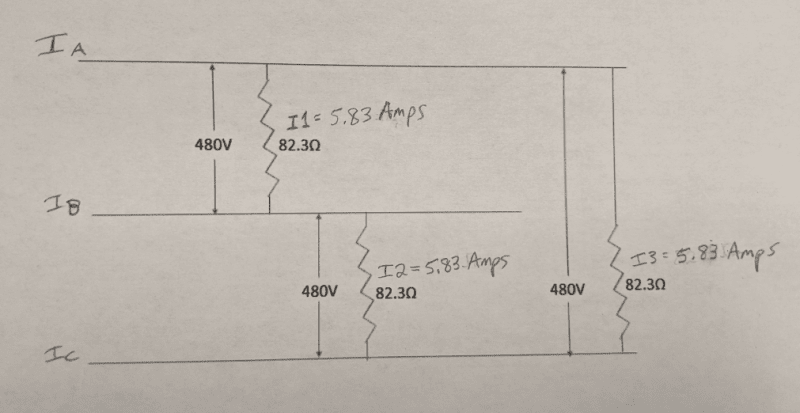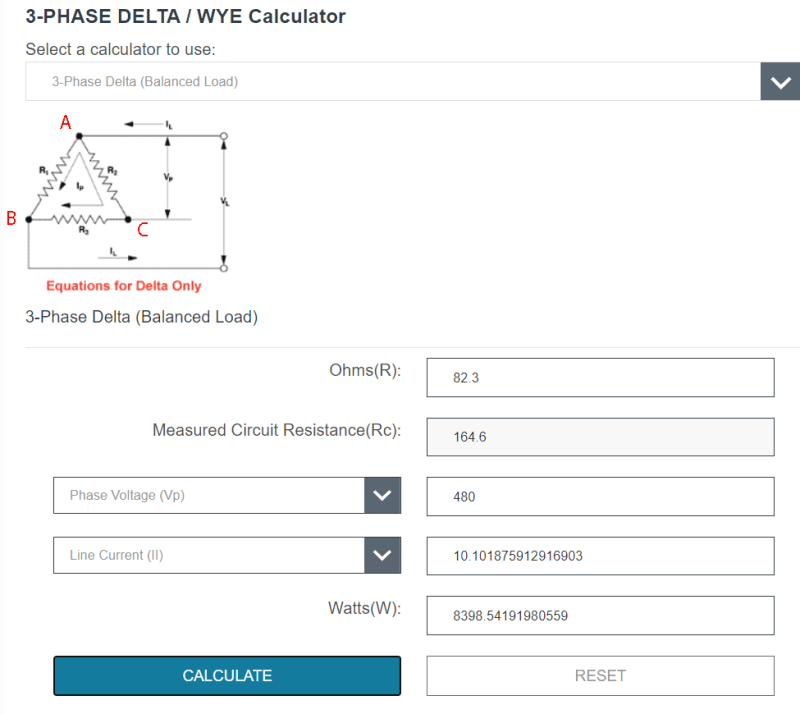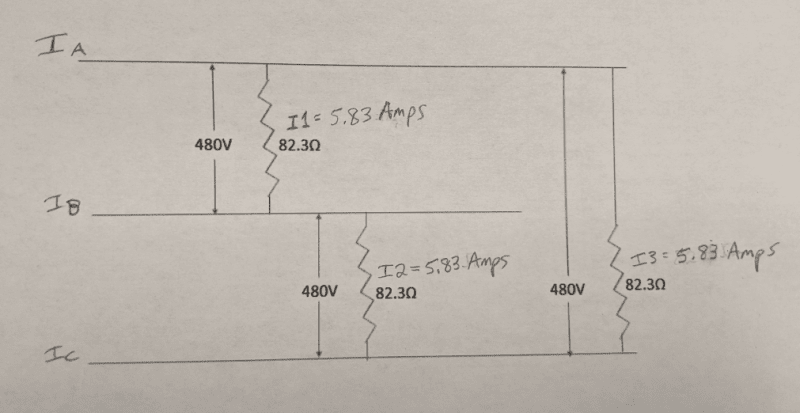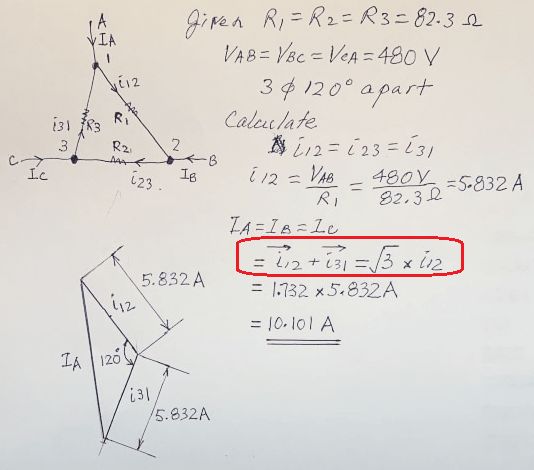PaulKraemer
Electrical
Hi,
I have three electric heaters with resistance 82.3 ohms each, wired in a delta configuration as shown on the left below. As I see it, each 480 VAC line-to-line voltage is applied across a parallel circuit as shown on the right below.

I calculate the total resistance of the circuit on the right as 54.87 ohms. The formula I = E/R = 480/54.87 = 8.75 amps leads me to believe that my expected current draw on each line would be 8.75 amps, but I am not entirely confident about this.
I am not sure if the delta-configuration introduces any complexity that would make my simple calculation invalid.
If anyone can tell me if my calculation is correction and if not, how/where I went wrong, I would greatly appreciate it.
Thanks in advance,
Paul
I have three electric heaters with resistance 82.3 ohms each, wired in a delta configuration as shown on the left below. As I see it, each 480 VAC line-to-line voltage is applied across a parallel circuit as shown on the right below.

I calculate the total resistance of the circuit on the right as 54.87 ohms. The formula I = E/R = 480/54.87 = 8.75 amps leads me to believe that my expected current draw on each line would be 8.75 amps, but I am not entirely confident about this.
I am not sure if the delta-configuration introduces any complexity that would make my simple calculation invalid.
If anyone can tell me if my calculation is correction and if not, how/where I went wrong, I would greatly appreciate it.
Thanks in advance,
Paul

